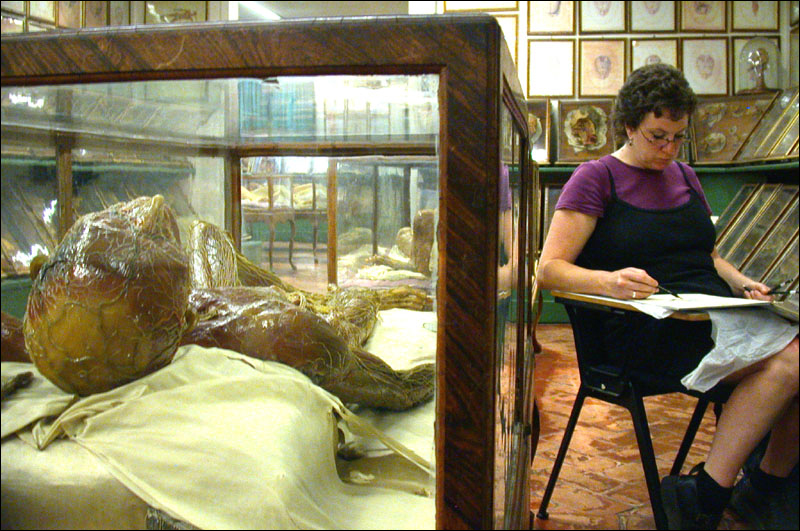The cutting and opening of the body to reveal what is normally not visible provides us a gaze like no other: a mirror into our own corporeal interior. Developed specifically as a 'text,' the anatomical body was initially opened in order to read the contents—anatomists creating scripts and maps with which to navigate the regions of the body; physicians configuring signs to determine pathologies and abnormalities. The resulting images, however, are equally inscribed with the heightened sensations of the dissection table, clearly revealing the cultural and societal constructs of the body within its historical context.
Linda Carreiro has examined historical anatomical images and objects for several years, a research that has become inextricably linked with her extensive practice as a visual artist. Focusing on the notion of 'histos' (meaning tissue, web or layer), she connects this root word to the corresponding facets of histology, history and historiography. This discussion will focus on the anatomical body as portrayed through atlases, écorchés and movable forms of flap-anatomy, devices that enable a penetration of the layers of the body as analogous to the act of dissection. She will also address how these concepts are interpreted in her own creative research, suggestive of a palimpsest that is sometimes re-written, sometimes revealed, sometimes concealed.
Linda Carreiro pursues cross-disciplinary research as an Associate Professor in the Department of Art at the University of Calgary in Canada. She exhibits her work in solo and group exhibitions throughout Canada and in the United States, and conducts lectures on historical anatomical imagery for audiences in both art and science.
Associate Professor, Department of Art
University of Calgary, Alberta, Canada



